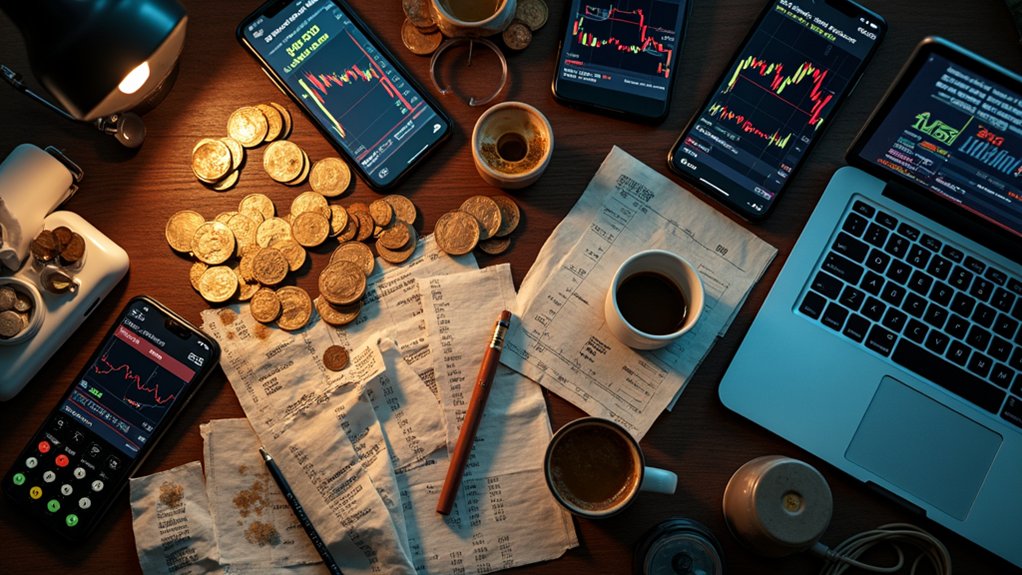Purchasing Power Parity measures what currencies *should* be worth based on the price of goods across borders, comparing how far a dollar stretches in Detroit versus Delhi. Traders use PPP as a long-term valuation benchmark, not a crystal ball for daily moves—markets ignore hamburger prices when capital flows and central bank drama dominate headlines. PPP spots overvalued or undervalued currencies but won't predict timing. It's a compass pointing toward equilibrium, even when speculation drags exchange rates miles off course for months or years at a stretch.

The theory rests on the “Law of One Price.” Identical goods should have identical prices globally, assuming no transaction costs or trade barriers. That assumption falls apart fast when you consider tariffs, shipping costs, and the fact that a loaf of bread in Cairo doesn't move freely to Nairobi. PPP measures underlying value and purchasing power differences between currencies, not the market exchange rates Kenyan or South African traders see flashing on their screens. Those rates get pushed around by speculation, central bank policy, and capital flows that have nothing to do with bread prices.
PPP tracks real purchasing power across borders, but market rates dance to speculation, policy shifts, and capital flows instead.
There are two flavors of PPP. Absolute PPP compares price levels directly using a fixed basket of goods. It ignores inflation and consumer behavior, making it less useful in practice. Relative PPP focuses on inflation differentials—how fast prices rise in Egypt versus Ghana—and links currency depreciation to those differences. It works better over the long term as inflation compounds. Both versions give traders benchmarks for spotting overvalued or undervalued currencies.
Organizations like the World Bank and IMF calculate PPP using massive datasets coordinated through the International Comparison Program. The famous “Big Mac Index” does the same thing with hamburgers, showing whether the South African rand or Egyptian pound is mispriced against the dollar. Forex traders in Lagos or Accra use these PPP comparisons as signals for long-term positioning. Short-term trades? Different story. Those hinge on news, interest rates, and pure speculation. Understanding which economic indicators drive sudden price movements helps traders anticipate volatility around scheduled data releases.
PPP has serious limitations. It assumes no transportation costs, tariffs, or barriers. None of that holds true in African markets where border inefficiencies, taxes, and price controls mess with comparisons. Short-term exchange rates bounce around far too much for PPP to predict daily moves. Local market frictions—like the challenge of moving funds out of countries with capital controls—render the theory incomplete. Non-tradable goods like real estate and domestic services don't move across borders, creating further discrepancies between PPP predictions and actual exchange rates. Traders also monitor business activity levels through sector-specific surveys that reveal expansion or contraction in key industries affecting currency demand.
Still, PPP remains a valuation tool. Not a crystal ball. Traders combine it with technical and fundamental analysis because using PPP alone is asking for trouble. It tells you where a currency *might* go eventually, not when or how violently it'll get there. PPP exchange rates prove more stable over time than the volatile market rates traders watch daily. Market exchange rates work best for aggregating financial flows like current account balances across countries, not welfare comparisons. When deviations from PPP emerge, arbitrage incentives push traders to buy undervalued currencies and sell overvalued ones, gradually driving rates back toward equilibrium. Beyond immediate trading decisions, political stability in a country shapes long-term currency strength by influencing investor confidence and capital flows. Strong economic growth tends to strengthen a currency as foreign investment increases and demand for the country's goods rises.
Common Questions
How Does PPP Work When African Currencies Face Strict Capital Controls?
Capital controls basically break PPP's core logic.
When African governments restrict currency convertibility, they block the arbitrage that's supposed to push exchange rates toward purchasing power balance.
Official rates and black market rates split apart, sometimes dramatically.
PPP calculations become unreliable—they overstate or understate real currency values.
Traders can't act on PPP signals because the market can't correct itself.
The theory assumes free movement of money and goods.
Strip that away, and PPP becomes more academic exercise than trading tool.
Can PPP Predict Devaluations in Currencies Like the Naira or Cedi?
PPP signals long-term devaluation *pressure* for the Naira or Cedi when inflation diverges sharply from trading partners, but it's terrible at timing actual crashes.
Capital controls, managed pegs, and sudden policy shifts make real-world rates deviate from PPP for years.
Studies show PPP underperforms in predicting short-term currency crises—it misses debt blowups, reserve depletion, and speculative attacks.
Think of it as a distant warning light, not a countdown timer.
Does PPP Apply to Informal Markets Where Most Africans Exchange Currency?
PPP doesn't apply to informal markets—and that's where most Africans actually exchange currency. Over 95% of consumer spending happens at kiosks and roadside stalls, not formal shops. PPP calculations use official rates and formal retail prices, completely ignoring the parallel markets where real people trade.
In Nigeria alone, 200,000+ roadside vendors handle currency for 80% of the population. The theory assumes transparency and formal records. Informal markets offer neither.
How Do Inflation Differences Between Egypt and South Africa Affect PPP Calculations?
Egypt's inflation running above 10% while South Africa sits around 3–3.5% means the Egyptian pound should depreciate roughly 12% annually against the rand under PPP theory.
Simple math: if the rate starts at 1 ZAR = 4 EGP, PPP predicts it'll shift to about 4.47 EGP by year-end.
That inflation gap drives long-term currency realignment.
Short-term noise happens, but persistent inflation differentials eventually show up in the exchange rate.
Why Doesn't PPP Account for Remittance Flows Impacting African Currency Values?
PPP tracks tradeable goods prices, not capital flows. Remittances are transfers between people, not commodity arbitrage.
They fund local services and household spending—stuff that doesn't cross borders for resale. Official stats miss informal channels anyway, especially across Africa where hawala and hand-delivery dominate.
National agencies don't systematically fold remittance data into exchange rate math. So PPP models ignore the $95 billion pouring into African economies annually, even though countries like Gambia and Lesotho depend on remittances for over 10% of GDP.










